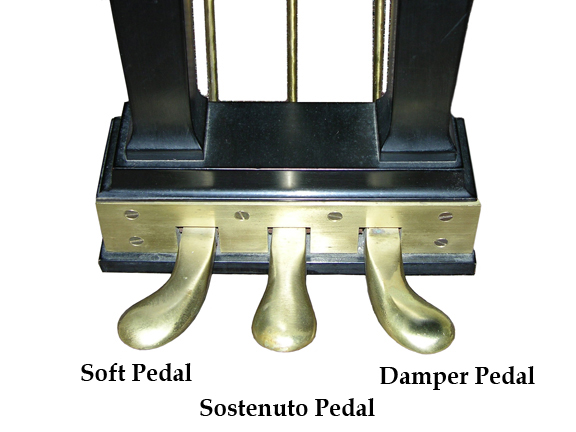Terms - P
p
pandora
pandoura
panpipes
pantaleon
pantonal
pantonality
paradiddle
paradon
parallel chords
parallel keys
parallel motion
paraphrase
pardessus
paridon
pariton
parlando
parody
part
part book
part crossing
part song
part writing
partial
partie finale
partimento
partita
partition
PAS
pas de deux
pas trop
paso doble
passacaglia
passage
passagio
passamezzo
passecaille
passepied
passing notes
Passion
passionato
pasticcio
pastoral
pastorale
pataflafla
patetico
patter song
Pauke
Pauken
pausa di biscroma
pausa di breve
pausa di centoventottavo
pausa di croma
pausa di minima
pausa di semibiscroma
pausa di semibreve
pausa di semicroma
pausa di semiminima
pausas de blanca
pausas de corchea
pausas de cuadrada
pausas de fusa
pausas de garrapatea
pausas de negra
pausas de redonda
pausas de semicorchea
pausas de semifusa
pause
pauses
pavan
pavana
pavane
pavillon
Pay Call
Pay Day March
pea whistle
Ped.
pedal
pedal harp
pedal note
pedal point
pedal tone
Pedalharfe
pegboard
pegbox
pegdisc
Peitsche
pellet bells
penando
penillon
penny whistle
pentatonic scale
pep band
percusión
percussion
percussion clef
percussion idiophone
percussion instruments
percussione
percussive
Percussive Arts Society
perdendosi
perfect
perfect authentic cadence
perfect concords
perfect pitch
perform
performance
performance marks
performance practice
performer
period
period double bar
pes
pes subpunctis
pesante
petit
petite flûte
peu
pezzo lirico
pf
phantasie
Phantasy
phrase
phrase marks
Phrasierungsbogen
phrasing
phrygian
phrygian cadence
piacere
piangendo
pianissimo
pianississimo
pianissississimo
pianississississimo
pianissississississimo
piano
pianoforte
piatti
pibgorn
pibroch
Pic.
picardische Terz
picardy third
Picc.
piccolo
piccolo trumpet
pick
Pickelflöte
pickup
pickup note
piece
pièce lyrique
pietoso
piffero
Pikkolo
Pikkoloflöte
pincé étouffé
pipa
pipe
pipe organ
pipeau
pirolo
pirouette
piston
piston flute
piston pipe
piston valve
pit
pit orchestra
pitch
pitch pipe
più
più allegro
più animato
più lento
più mosso
più moto
piva
pivot
pizz.
pizzicato
Pk.
placido
plagal cadence
plain chant
plain song
plainte
planche à laver
planchette ronflante
planctus
Platinum Record
plectre
plectrum
Plektrum
plettro
plica
pluck
plucked idiophone
plunger
plus
pneuma
pochissimo
pocket bassoon
poco
podatus
point
point d'arret
point d'orgue
pointe
police whistle
polka
polonaise
polychoral
polychord
polyharmony
polyphonic
polyphony
polyrhythm
polytonality
Pommer
pomposo
ponticello
popular music
porrectus
porrectus flexus
port
port de voix
portamento
portando
portative organ
Posaune
position
positive organ
postlude
pp
ppp
pppp
ppppp
pppppp
praeludium
Pralltriller
pre-Classical
precentor
precisamente
prelude
preparation
prepared piano
près du chevalet
press roll
pressez
prestissimo
presto
prima
prima donna
prima prattica
prima volta
prime
primitive music
primitivism
primo
principal
principale
proben
program music
program symphony
progression
progressive rock
prolatio
prologue
Proper
properties of sound
proportion
prosa
prosody
prosula
provare
psalm
psalmody
psaltry
psychobilly
puente
puncta
punctum
punctus
punk rock
Punkt
Punktierte Note
punta
puntato
puntillo
punto
pure music
purfling
pedal
PE-dul
[English]
- (Piano Pedal) A device on a piano that is activated by the foot of the performer. There are either two or three pedals on the modern piano.
- The right pedal is a damper pedal, which, when depressed, raises the from the strings and allows the sound of the piano to be sustained. This is the most used pedal. The letters "Ped" provide the directive for the performer to depress the damper pedal and the marking to indicate the release is a flowery looking asterisk symbol (More about keyboard notations). These directives should be exactly under the beat or fraction of the beat where the damper pedal should be depressed or released. It should be noted that there is a half-pedal directive that instructs the performer to depress the damper pedal fully and then release half-way before depressing fully again or releasing. The markings are similar, however there is a line between the two markings with a spike in the line where the half-pedal is to occur.
- The left pedal is the soft pedal or the muting pedal, which, when depressed, softens the volume of the sound. The term una corda (Italian for one string) is shown under the staff directing the performer to depress the soft pedal, and the term tre corde (Italian for three strings) is shown under the staff directing the performer to release the soft pedal.;
- Larger pianos will also have a third pedal in between the damper pedal and the soft pedal called the sostenuto pedal. Depressing this pedal will dampen only the strings that have been struck. The letters "S.P." below the notes of the composition direct the performer to depress the sostenuto pedal. This is often followed by a line slanted up with a downward line on the end to indicate the release of the pedal.
- See also damper pedal; half-pedal; soft pedal; muting pedal; sostenuto pedal; una corda; tre corde; Ped; S.P..
- (Pedal Tone) A range of pitches on a brass instrument that represent the lowest fundamental pitches of that instrument and the basis for the harmonic series for that combination of valves or slide position. The pedal tones are typically only practical to be performed by advanced performers, especially with instruments like the trumpet that are designed to play the higher harmonics more efficiently.
- (Organ Pedal) An organ keyboard played by the feet of the performer.
- (Harp Pedal) Devices on the modern harp that, when activated by the foot of the performer, raise the the pitch of selected strings up to two half steps or two semitones.
- (Kick Drum Pedal) A device operated by the foot to strike the bass drum (kick drum) of a drum kit.
- (Timpani Pedal) A device operated by the foot to change the tension on the head of a timpani thus altering the pitch.
- (High-Hat Pedal) A device operated by the foot to strike the cymbals of a hi-hat.
- (Pedal Point) A low, sustained note or drone in a composition, usually performed by the lowest voice or instrument of the performing ensemble. Also see (organ point).


 Piano Pedals
Piano Pedals